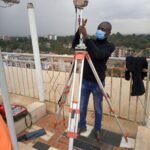About Course
Course objectives
About the course, three are the words that define the Geostatistics Course for Beginners; geostatistics, R and QGIS.
The main goal of this course is to learn the basics, the fundamentals of the geostatistics; mainly, in the area of the exploratory data analysis. Depending on the successful of this part of the course, it could be extended to structural analysis and also, data estimation with Kriging/cokriging Interpolation.
The second goal of the course is to learn coding with R. This coding will be based in the creation of graph for data analysis, coding for testing data and coding for the estimation of values.
The third and last goal is to integrate R within QGIS. Therefore, the objective is to create our own algorithms with R, and use them in QGIS. In this way, we can create all the work flow from QGIS.
Course requisites
Anyone can be part of this course. After all, the level of the course is for beginners. Thus, no previous knowledge is required, as we are going to start from zero. The explanations are going to be very simple and with real examples. It is a step-by-step course, easy to follow and easy to apply what you are learning. I am going to provide everything for the course, lessons, data, software, etc.
Course achievements
Once finished the Geostatistics Course for Beginners, your QGIS will become a stronger tool for spatial data analysis; and most important, you will get a better understanding on the exploratory data analysis.
Course recommendations
It is not necessary to have any previous experience on geostatitics to take the course. However, we like to recommend to watch the previous geostatitics course. You can follow the link below:
Course Content
Lesson 1.
-
Integrating R with QGIS.
17:27







